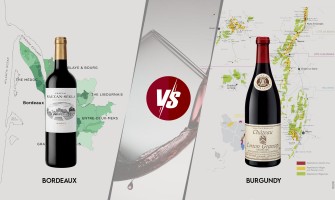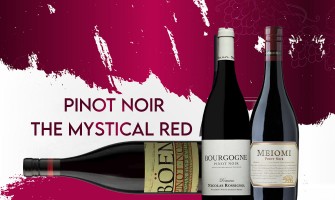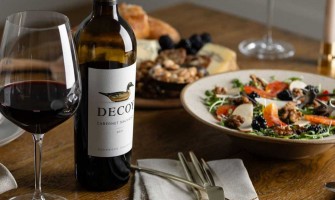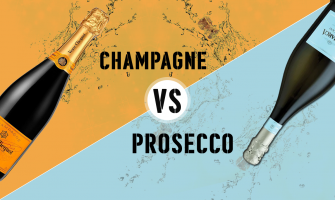
If you’re a wine lover, chances are you have a cozy nook in your house dedicated to a few bottles, ready to grace dinners and special occasions. But what you might not realize is that your wines are just as enjoyable to cook with as they are to drink. Yes, wine can be a fantastic ingredient—a kind of magic potion that can uplevel any culinary creation to chef-kiss perfection, rushing it with a spell of stellar flavors, acidity, and complexity.
While white wines are often considered the most staple choice for cooking, there are a plethora of culinary angles that call for a good red wine for cooking. Why? The striking differences between red and white wines make each of them prepare and pair different sets of dishes, with tender whites complementing delicate dishes like seafood and poultry and bold reds elevating hearty meals such as steak and roasted lamb.
So if you’re ready to sizzle up your kitchen space with the goodness of red wines, check out this blog post. It doesn’t just list the top red wines for cooking, ranging from bold cabernets to versatile Merlots and everything in between, but also shares valuable insights, from how you can pick the best red wine for cooking to storage suggestions, preferred dishes to cook with it and more.
Prepare yourself for a flavorful journey into the world of cooking with red wine. Whether you’re looking to reignite your cooking routine, enhance a dish that’s missing something, or simply use up some leftover wine instead of pouring it down the sink, we’ve got you covered.
Firstly, What's the Deal With Cooking Wines? Should You Choose One Over Red Wine For Cooking?
To dispel this confusion, it’s crucial to recognize that “cooking wines” is itself a blanket term. Technically, any wine can be a cooking wine by being used in cooking in some other way. However, the bottles often spotted next to salad dressings and vinegars in grocery stores, specifically marketed as “cooking wines," are ones to be cautious of. These are nothing but mass-produced blends of inferior wines, later heavily altered with loadful additions of life-extending salts and preservatives, making them of poor taste and unfit to drink.
This very quality makes cooking wines a poor choice for cooking, as their addition to any dish can overwhelm it with undesirable flavors. Stay away from store-bought cooking wines and instead choose a good red wine for cooking, one that you would enjoy drinking in the first place, enhancing the overall taste of the dish by beautifully blending the subtle nuances of its fine flavors with those of the ingredients.
Why Do Folk Choose Red Wines For Cooking?
Be it professional chefs, food critics, or any other culinary expert, they vouch for red wines being spectacular choices for cooking. Red wines, with their bold character, typically help prepare hearty dishes such as beef stews, lamb chops, and grilled steak, deepening the taste with their bold flavors, balancing tannins, and heightening richness with their fuller body.
Furthermore, they are impressively versatile, blush up dishes with their captivating red hues, and, not to forget, promise the addition of those antioxidant-rich health benefits.. However, when selecting a good red wine for cooking, it’s crucial to think about whether it stands out as harmonious, balancing the dish’s intensity without overpowering or getting lost under the flavors and structure of the recipe.
While white wines are preferred for cooking lighter dishes like chicken piccata and seafood risotto, a red wine can be substituted if it’s light-bodied, such as a Pinot Noir or Gamay. These varieties have less intense flavors and tannins but more pronounced fruity and flavor notes, complementing the dish with a subtle elegance. Quick techniques like pan sauces or vinaigrettes, rather than long braises and reductions, are best suited, adding a delightful twist just as you season your favorite pizza.
What are Dry Red Wines? Why Are They Preferred Reds For Cooking?
Defining Dry Red Wines:
Dry red wines, as the name suggests, are characterized by their "Dry” nature, which, in wine-speak, means little to no sweetness. Diving deeper, this quality is deliberately achieved by winemakers as they extend the fermentation process, turning most of the grapes’ natural sugars into alcohol and carbon dioxide.
The sugar left, called residual sugar, determines the perceived sweetness of dry red wines. It is nearly nil in bone-dry red wines (0–4 g/L), minimal in dry red wines (5–10 g/L), and slightly noticeable in off-dry/semi-dry red wines (11–35 g/L). Any red wine beyond this spectrum will likely be sugar-laden, noticeably sweet, and therefore labeled as a sweet red wine.
Reasons Dry Red Wines Are Preferred For Cooking:
-
Enhance Flavor Without Added Sweetness
Folks usually prefer a dry red wine for cooking due to its ability to enhance savory dishes without introducing unwanted sweetness, unlike a sweet wine that caramelizes quickly when used.
-
Bold Flavors and Tannins
Dry red wines are characterized by structured, grippy tannins and bold flavors ranging from fruity and jammy to earthy and spicy. Maceration, a fermentation process that involves sitting grapes with skins, is the source of both these characteristics. This enables a dry red wine for cooking to withstand time-consuming recipes while adding depth and richness to a wide array of dishes.
-
Acidity For Balance
Additionally, the acidity present in dry red wines helps them balance the richness of dishes, cutting through big fat flavors and cleansing the palate.
-
Versatility in Cooking Techniques
You can use a dry red wine for cooking a wide array of dishes through various fun techniques. Explore top ones below:
Deglazing: After searing meats and veggies, deglazing the pan with a splash of dry red wine not only boosts the dish’s richness but also lifts those flavorful brown bits stuck to the pan.
Marinades and Basting: You can confidently use a dry red wine to make marinades or basting liquids, with the wine infusing the meat with rich flavors and tenderizing it by breaking down the proteins with its tannins.
Braising: You can use a dry red wine for cooking braised dishes like beef bourguignon or coq au vin, adding richness and acidity to the meat and veggies as it braises them with each passing second.
Reduction Sauces: Simmering dry red wine until reduced creates an intensely flavorful sauce that pairs well with meats, poultry, and veggies.
Poaching: Poaching pears or figs in a mixture of dry red wine, sugar, and spices results in elegant, aromatic desserts. The fruit absorbs the wine’s flavors and cooks with perfection.
Stews and Soups: Whether it’s a classic beef stew or a hearty tomato soup, adding dry red wine contributes complexity and richness to the dish.
Vinaigrettes: Create a tangy vinaigrette by mixing dry red wine with olive oil, vinegar, mustard, and herbs. It’s a perfect marinade for chicken and fish or dressing for mixed greens and veggies.
Risottos and Pasta Sauces: Whether it’s a creamy risotto or a pasta sauce, dry red magnifies the overall taste with its bold personality.
Uncover The Best Dry Red Wine For Cooking:
To begin with, when picking the best dry red wine for cooking, remember first that it should complement your dish and second that it should be beautifully balanced, e.g., fruity but not candied in touch, and contain enough malic acid to not taste flat later.
Here are the best dry red wines for cooking with respect to their sweetness levels:
Best Bone-Dry Red Wines For Cooking:
Tempranillo: This Spanish grape variety is famed for producing super dry, big-bodied reds with firm tannins and bold flavors of cherry, plum, leather, and tobacco. This robust character makes it perfect for braising and stewing hearty dishes such as grilled meats, rich stews, and aged cheeses.
Merlot: Classic with its bordeaux heritage, merlot yields medium-bodied, bone-dry reds with soft tannins, smooth texture, and ripe fruit flavors of plum, cherry, blackberry, and raspberry. Ideal for pan searing and simmering sauces while cooking roast chicken, pasta dishes, and grilled veggies.
Cabernet Sauvignon: Cabernets are famed for their robust structure hinged on high tannins and bold flavors of blackcurrant, blackberry, cedar, and tobacco. This vigor makes a cabernet withstand long cooking times in slow-cooked dishes like beef stew, braised short ribs, beef bourguignon, or rich risottos, whether you choose to braise, prepare sauces, or marinate meats with it.
Cabernet Franc: This medium-bodied and zesty seductive sipper offers herbal notes, red fruit flavors, and subtle spice undertones. This makes it a versatile dry red wine for cooking, most preferably roasted chicken, pork tenderloin, vegetable stir-fries, herb-infused sauces, and Mediterranean-inspired cuisine.
Best Dry Red Wines For Cooking:
-
Syrah/Shiraz: This dry red is a true daredevil with its steely tannins, full body and bold flavors, starting from blackberry to blueberry, pepper and spice. Though many vote it as 'chalky' or “astringent” while cooking, we vouch for it to assist in grilling, smoking, and slow roasting in dishes like beef brisket, lamb chops, and spicy cajun jambalaya.
-
Pinot Noir: Pinot Noir is an approachable dry red famed for its feather-like feel and approachability, gifted by its delicately balanced fruitiness, acidity, and gentle tannins. This makes it an all-around dry red wine for cooking, especially pan roasting, sautéing, and lightly grilling for rich dishes such as roasted duck, salmon filets, and wild mushroom risotto.
-
Sangiovese: Being the backbone of Italian red wines, sangiovese produces expressions that are gracefully balanced, dry, medium-bodied, radiantly acidic, and flavored like tart cherries. You can confidently pick a sangiovese and use it in rich dishes like tomato-based pasta dishes, pizza, grilled steak, and roasted lamb to either simmer, roast, or reduce.
Best Off-Dry/Semi-Dry Red Wines:
-
Grenache: Grenache stands out as a dry red wine with dotted sweetness, hefty body, moderate acidity, a red fruit-forward character, along with spicy undertones and soft tannins. This makes it a great kitchen addition to grill, roast, stew, and braise savory dishes like lamb, pork, poultry, and spicy foods.
-
Zinfandel: When you sip a zinfandel, it explodes like confetti of candied dark fruitiness, followed by spice and a tobacco-like smoky finish. In addition to this jamminess, its full body and smooth texture make it an adaptable dry red wine for cooking, particularly grilling, braising, and reduction sauces in red meat dishes, spicy foods, BBQ, and tomato-based sauces.
-
Malbec: Lastly, Malbec is a bold, big-bodied beauty that usually coats the palate with silky tannins and dark fruit flavors of black cherry, plum, and blackberry, along with notes of cocoa and tobacco. We would suggest grilling, braising, stewing, and reduction sauces with it in dishes like beef, lamb, pork, and spicy foods.
|
Dry Red Wines For Cooking |
Unique Features |
Dishes To Cook With |
Suited Cooking Techniques |
| Tempranillo | Medium to Full-Bodied, Firm Tannins, Bold Flavors | Grilled Meats, Rich Stews, Aged Cheeses | Braising, Stewing |
| Merlot | Medium-Bodied, Soft Tannins, Smooth Texture, Ripe Fruit Flavors | Roast Chicken, Pasta Dishes, Grilled Veggies | Pan Searing, Simmering Sauces |
| Cabernet Sauvignon | Full-Bodied, High Tannins, Bold Flavors | Beef Stew, Braised Short Ribs, Beef Bourguignon, Rich Risottos | Braising, Preparing Sauces, Marinating |
| Cabernet Franc | Medium-Bodied, Zesty, Herbaceous, Red Fruit Flavors | Roasted Chicken, Mediterranean-Inspired Cuisine, Pork Tenderloin, Vegetable Stir-Fries, Herb-Infused Sauces | Braising, Reduction Sauces |
| Pinot Noir | Light-Bodied, Approachable, Delicately Balanced | Roasted Duck, Salmon Filets, Wild Mushroom Risotto | Pan Roasting, Sautéing, Lightly Grilling |
| Syrah/Shiraz | Firm Tannins, Full-Bodied, Bold Flavors | Beef Brisket, Lamb Chops, Spicy Cajun Jambalaya | Grilling, Smoking, Slow Roasting |
| Sangiovese | Gracefully Balanced, Medium-Bodied, Brightly Acidic, Tart Cherry Flavors | Tomato-Based Pasta Dishes, Pizza, Grilled, Steak, Roasted Lamb | Simmering, Roasting, Reductions |
| Grenache | Minimal Sweetness, Full-Bodied, Moderate Acidity, Fruit-forwarded | Lamb, Pork, Poultry, Spicy Foods | Grilling, Roasting, Stewing, Braising |
| Zinfandel | Candied Fruitiness, Full-Bodied, Smooth Texture | Red Meat Dishes, Spicy Foods, BBQ, Tomato-Based Sauces | Grilling, Braising, Reduction Sauces |
| Malbec | Bold, Full-bodied, Silky Tannins, Dark Fruit Flavors | Beef, Lamb, Pork, Spicy Foods | Grilling, Braising, Stewing, Reduction Sauces |
What About Sweet Red Wines For Cooking?
See, cooking is art, and art knows no steadfast, hardcore rules. So, once in a while, you can choose a sweet red wine for cooking. Famed for their light body and fruit-forward nature, sweet reds steal the spotlight by adding flavorful depth to braised meats, sauces, syrups, marinades, and desserts. Worry not, when chosen in the right quantity for the right dish, it won’t turn too syrupy or cloying in, as the wine’s sweetness will be slightly masked by its own acidity as well as the savoriness of the dish.
However, it’s important to exercise caution when using sweet wines for cooking, as a sharp imbalance between the flavors of the wine and ingredients could result in an okayish, off-putting, or worse, an awful overall taste. Avoid over-reducing the wine or starting with heavily-seasoned dishes such as a spicy Thai curry or heavily-seasoned steak.
Uncover The Best Dry Red Wine For Cooking:
Here are the best recommended sweet red wines for cooking, along with their flavor features and preferred dishes to cook with:
-
Black Muscat: A black muscat red wine known for its floral aromas and luscious sweetness, typically above 35 g/L, will spark up both your sweet and savory dishes. In desserts, it shines in compotes, poached fruits, and chocolate sauces, while as a marinade or glaze, it infuses savory meats and veggies with aromatic sweetness.
-
Port: These fortified wines showcase stellar depth of flavor with notes of dark berries, dried fruits, and a hint of spice. On top, they are utterly velvety sweet, with Ruby Ports being 80–120 g/L and Tawny Ports 50–100 g/L sweet. This makes ports perfect to cook desserts, stews, and red meat dishes through reductions, sauce making, and braising.
-
Marsala: A fortified wine that you will find a bit sweet even in its driest version, is one with which you can prep up desserts, cream sauces, and the famous chicken marsala. Whether you deglaze, reduce, or pan-fry, its nutty, rich flavor will coat the dish in a way that is simply spellbinding.
-
Madeira: Though available in drier versions too, you can opt for the sweet expressions of Madeira with sweetness a range of 60-90 g/L: Bual (or Boal) and Malmsey (or Malvasia). Both express complex sweetness with subtle acidity and nuances of caramel, nuts, and dried fruits, making them ideal to make soups, sauces, red meat dishes, and desserts.
-
Banyuls: Hailing from the sun-drenched vineyards of Southern France, this honeyed fortified gem is intense and fruity at its core. You can trust its complexity to elevate both sweet and savory dishes, whether marinades for grilled meats, reductions for sauces, or chocolate desserts.
|
Sweet Red Wines For Cooking |
Unique Features |
Dishes To Cook With |
Suited Cooking Techniques |
| Black Muscat | Floral Aromas, Luscious sweetness | Compotes, Poached Fruits, Chocolate Sauces, Meats and Veggies | Marinades, Glazing, Poaching, Sauces Preparation |
| Port | Rich, Fortified, Deep Flavors | Desserts, Stews, Red Meat Dishes | Reduction Sauces, Braising, Braising |
| Madeira | Nutty, Complex Flavors, Fortified | Soups, Sauces, Red Meat Dishes, Desserts | Reduction, Deglazing, Braising |
| Marsala | Nutty, Rich, Fortified | Chicken Marsala, Cream Sauces, Desserts | Deglazing, Reduction, Pan-Frying |
| Banyuls | Intense, Fruity, Fortified | Chocolate Desserts, Red Meat Dishes | Reduction, Marinades |
Tips To Choose The Best Dry Red Wine For Cooking:
-
Consider the Dish: Before you choose a good red wine to cook with, consider the specific dish you’re preparing and the flavors you want to enhance. For instance, merlot’s fruity undertones are best for cooking beef; cabernet sauvignon’s robust flavor for lamb; and pinot noir’s lighter profile for chicken.
-
Avoid Ultra Tannic & Oaky Ones: If your chosen red wine for cooking is heavily influenced by tannins and oak, then it can leave an undesirable, bitter aftertaste to your dish. So avoid a red wine that is famed for being ultra-tannic or ultra oak-influenced.
-
Watch the ABV: Wines with high alcohol content often impart a harsh taste to dishes when cooked, unlike high-ABV-fortified wines, which are primarily suited for bold dishes, desserts, and syrups. So, choose a moderate ABV red wine for cooking, around 10–13%. As soon as it’s added to the pan, the booze will evaporate, intensifying the natural essence of your dish with a cornucopia of flavors.
-
Don’t Buy Cheap: Avoid cheap stuff readily available in the market in the name of red wines, be it a red cooking wine, a red two-buck chuck (no hate) or a bottom-of-the-barrel swill. All of these make perfect one-way tickets to an undesirable dinner.
-
Don’t Splurge: While we steer you clear of a cheap dry/sweet red wine for cooking, we don’t want you to raid your cellar for an expensive bottle of red that’s been happily aging for years either, as it will quickly lose its delicate nuances when subjected to heat. Spend wisely and shop for a mid-priced bottle from a broad geographical region, ranging from $15 to $20.
To help you enjoy quality within your budget, here are a few suggested inexpensive red wines for cooking:
From Here Comes The Fun Fact: You don’t get high from dishes cooked with wine as booze burns off.
How To Store Your Chosen Red Wine For Cooking?
After you’ve chosen the best red wine to cook with, it's time to store it in a proper condition to keep its beauty preserved. Follow these core suggestions:
-
Storage Position: To keep the cork moist, store the bottle horizontally, as drying can lead to oxidation.
-
Temperature: Maintain a consistent temperature of around 55°F (12°C).
-
Light: Protect the wine from direct sunlight or strong artificial light sources.
-
Other factors: Keep the bottle away from strong odors or vibrations, as they may negatively alter its aroma and taste.
Can You Use a Leftover Red Wine for Cooking?
Don’t bother treating your kitchen sink to a luxurious spa by pouring out your leftover wine, even if it's been open for a while. Instead, store the opened wine bottle properly for later use, by first resealing it with a wine stopper or cork and placing it upright in a cool, dark place (yes, your refrigerator will work). Speaking of shelf life, you can use your leftover elixir to cook within a few weeks.
Can You Freeze Leftover Red Wine for Cooking?
Yes, you can freeze leftover red wine for cooking. Simply pour it into an ice cube tray and place it in the freezer for a frosty ride. Freezing wine into cubes eliminates the risk of bottle damage and provides convenient measurements, with each cube containing about 2-3 tablespoons.
Wine freezes at around 22°F (-5.5°C), solidifying in approximately 5 hours. These cubes can be used within 3–4 months, making them best for deglazing pans, enhancing soups or sauces, or making refreshing summer treats like slushies, popsicles, sorbet, and granita.
A Few Expert Tips While Cooking With a Red Wine:
Grab on to these expert tips that might unlock new adventures while using red wine for cooking:
-
To avoid any raw wine taste in hearty dishes like beef stew and coq au vin, consider splashing the wine into the pan first, letting the alcohol burn off.
-
Cook red wine along with the food, rather than adding it right before serving, to allow the flavors to fully blend.
-
Opt for non-reactive cookware, such as stainless steel, to avoid any unwanted metallic taste in your dish when cooking with wine.
-
If you’re up for experimenting with red wine in cream sauces and risottos, cook the wine separately and reduce it to half its volume before adding cream, ensuring a more harmonious blend of flavors.
-
Typically, you use no more than one cup of wine to prepare a dish, giving you the option to save the rest for later or serve wine in traditional large-bowl red wine glasses, as wines generally pair well with the dishes they're used in.
Final Thoughts:
Dive into the diverse world of red wines for cooking and experiment with endless culinary experiences beyond merely savoring bold, unapologetic reds. Don your aprons, prep your ingredients, and immerse yourself in the art of cooking with red wine with the help of this comprehensive guide.
From the robust notes of a Cabernet Sauvignon to the fruity elegance of a fruity Pinot Noir or the nutty complexity of a Madeira, discover the perfect bottle to elevate your dishes, serving up unforgettable memories, one savory bite at a time.
Read More Red Wine Blogs:
Difference Between Red Wine and White Wine
Best California Red Wines For Gift
























































Leave a Comment